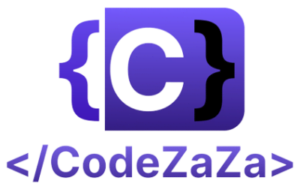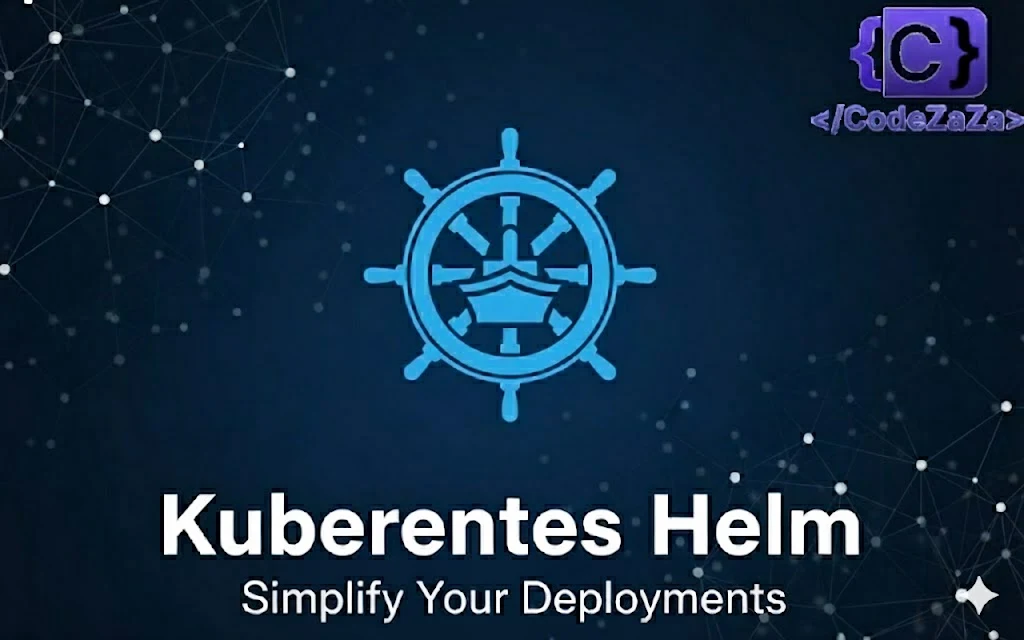Kubernetes Helm automates the creation, packaging, configuration, and deployment of Kubernetes applications by combining configuration files into a single reusable package. Automating this work helps developers working with microservices.
In a microservices architecture, you create more microservices as the application grows, making it increasingly difficult to manage. Kubernetes, an open source container orchestration technology, simplifies the process by grouping multiple microservices into a single deployment.
But managing Kubernetes applications across the development lifecycle brings its own set of challenges, including version management, resource allocation, updating, and rollbacks.
Helm provides one of the most accessible solutions to this problem, making deployments more consistent, repeatable, and reliable

Helm Key Features
1. Application Deployment
Helm simplifies deploying complex applications by providing a single package that includes all required settings and Kubernetes resources. Developers package their applications as Helm charts, making installation and management easy through the Helm CLI. Instead of manually creating and managing each Kubernetes resource, Helm automates the deployment process, allowing developers to deploy applications to Kubernetes clusters effortlessly.
2. Distribution of Applications
Helm offers a centralized chart repository for storing and sharing application packages. Developers can easily publish their charts to public repositories or create private repositories for internal use. This centralized system enables quick discovery, installation, and sharing of Helm charts across teams, improving collaboration and deployment efficiency.
3. Application Versioning
Helm allows developers to version their charts, making it simple to roll back to a previous version if something goes wrong. This feature helps reduce downtime and ensures stability after failed upgrades. Developers can also track application changes over time, making it easier to manage upgrades and downgrades in Kubernetes environments.
4. Application Reusability
Helm promotes reusability by allowing teams to share pre-built charts across multiple projects. Developers can package an application with all its configurations and resources in a reusable Helm chart. This approach reduces duplicate effort and speeds up deployment within organizations by enabling teams to deploy consistent and tested application stacks quickly.
5. Chart Management
Helm lets developers create, manage, and organize charts, which are pre-configured packages of Kubernetes resources. These charts can be versioned, shared, and reused across multiple environments, providing consistency and simplifying lifecycle management.
6. Dependency Management
Helm supports dependency management, allowing developers to define dependencies between multiple charts. This ensures that related components (like databases or message queues) deploy automatically with the main application, simplifying multi-service deployments.
7. Release Management
Helm makes it easy to install, upgrade, and uninstall Kubernetes applications as releases. Each release represents a specific instance of a chart deployed in the cluster. Developers can track, modify, or roll back releases as needed, providing strong control over the deployment lifecycle.
8. Configuration Management
Helm allows developers to define and manage custom configuration values for different environments. These values can be passed to charts during deployment, ensuring that applications behave consistently while adapting to environment-specific needs (like dev, staging, or production).
How Helm Works
Helm includes a server component called ‘Tiller’, which deploys in the same Kubernetes cluster as other applications. Tiller actively listens to commands issued through the Helm CLI and converts them into Kubernetes manifests. In Helm, packages are managed using an abstraction called ‘Charts’. Additionally, the Helm Community maintains an official chart repository, which hosts packages for widely used applications. Besides using these existing charts, users can also create new charts for their specific use-cases and push them to either public or private repositories.
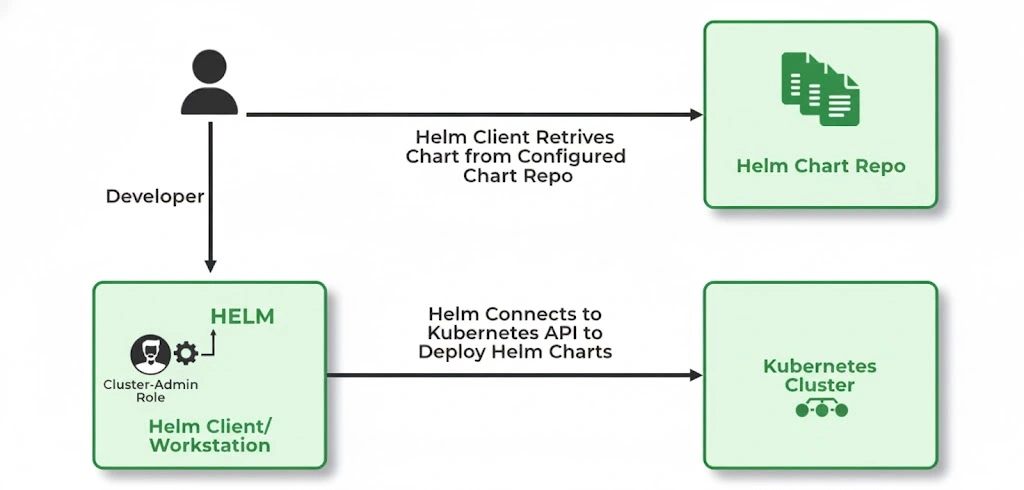
A typical Helm chart consists of templates, values.yaml, and chart.yaml. The Chart.yaml file stores all the deployment metadata, including the owner, email, version, and more. Meanwhile, the values.yaml file defines all default configurations required for the application to function. Importantly, users can override these fields with custom values depending on their needs. For example, when deploying an application across tiered environments such as development, staging, and production, each environment can have distinct configurations and keys. Furthermore, the template files use the Golang templating format to combine configurations from values.yaml or command-line inputs, and then generate complete Kubernetes manifests. Helm actively manages chart installations through ‘Releases’, where a combination of deployment, configuration, and default values in values.yaml forms a unique release.
Moreover, a single chart can generate multiple releases based on different configurations. For instance, consider a messaging queue or broker. If you want to deploy a cluster of brokers following High Availability principles, you could deploy one queue as active and another as its mirror. Similarly, you could configure 2-3 queues, with one handling writes and the others handling reads from mirrored data. In scenarios where the application is read-heavy rather than write-heavy, this setup can significantly enhance performance.
Helm terminologies and core components
Chart:
A Helm chart is a packaged collection of pre-configured Kubernetes resources such as Deployments, Services, and ConfigMaps. It serves as a blueprint for deploying applications on Kubernetes clusters. Charts make it easier to manage complex applications by bundling all necessary resources together. They can be versioned, shared, and reused across different environments.
Release:
A release is a specific instance of a chart that has been deployed to a Kubernetes cluster. Each release has a unique name, allowing multiple instances of the same chart to coexist in the cluster. Releases track the history of deployments, enabling rollbacks or upgrades. Essentially, it represents a live, running application derived from a chart.
Repository:
A Helm repository is a collection of charts stored in a centralized location, often on a remote server. Repositories allow developers to share and distribute charts easily across teams or the wider community. Helm can search, fetch, and install charts directly from repositories. They provide versioning and metadata, making chart management simple and organized.
Values:
Values are configuration settings that define how a chart should be deployed. They allow customization of templates without modifying the chart itself. Users can provide different values.yaml files for different environments like development, staging, or production. This makes deployments flexible and consistent across clusters.
Helm Chart (Helm Package Manager):
Helm itself is the package manager for Kubernetes, designed to simplify application deployment and management. It uses charts as packages to install, upgrade, or rollback applications efficiently. Helm handles dependency management, templating, and configuration seamlessly. With Helm, managing Kubernetes applications becomes standardized and reproducible.
How to Install Helm on Ubuntu
Installing Helm on Ubuntu is straightforward and can be done using the official Helm script or via package managers like snap or apt. Here’s a step-by-step guide:
1. Update Your System
Before installing any new software, it’s a good practice to update your system packages:
sudo apt update
sudo apt upgrade -y2. Install Helm Using the Official Script
The easiest way to install Helm is to use the official installation script provided by the Helm project:
curl https://raw.githubusercontent.com/helm/helm/main/scripts/get-helm-3 | bashThis script automatically downloads and installs the latest Helm version. After the installation, verify it using:
helm versionYou should see the installed Helm version along with client and server information.
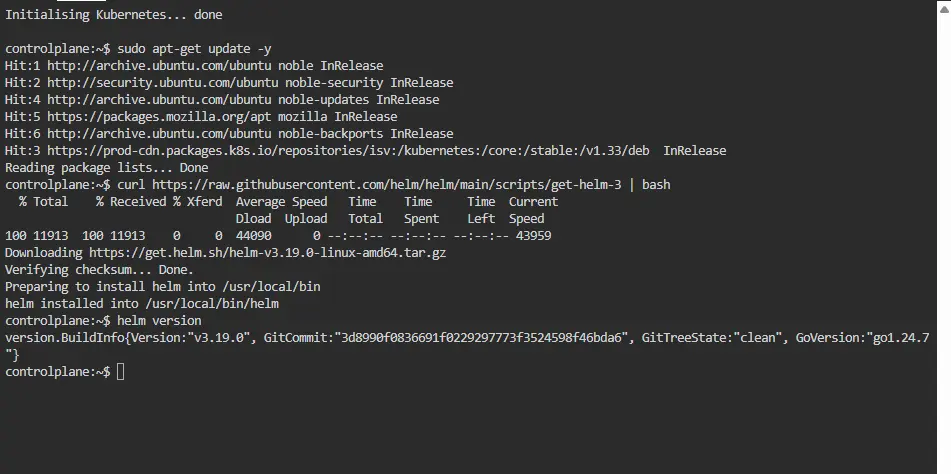
Basic Commands of Helm
Helm, the package manager for Kubernetes, simplifies deploying and managing applications through reusable charts. Once you understand the core commands, you can efficiently install, manage, and remove applications on your Kubernetes cluster. Here’s a breakdown of the most commonly used Helm commands:
1. Install a Helm Chart
The helm install command is used to deploy an application packaged as a Helm chart onto a Kubernetes cluster. A chart contains all the Kubernetes resources required for the application, such as Deployments, Services, ConfigMaps, and more. The command syntax is:
helm install <release-name> <chart-name>Here, <release-name> is a unique identifier you assign to this deployment, and <chart-name> is the name of the chart you want to install. After running this command, Helm creates all the defined resources in the cluster and tracks this deployment as a release. This allows you to easily upgrade, rollback, or uninstall it later.
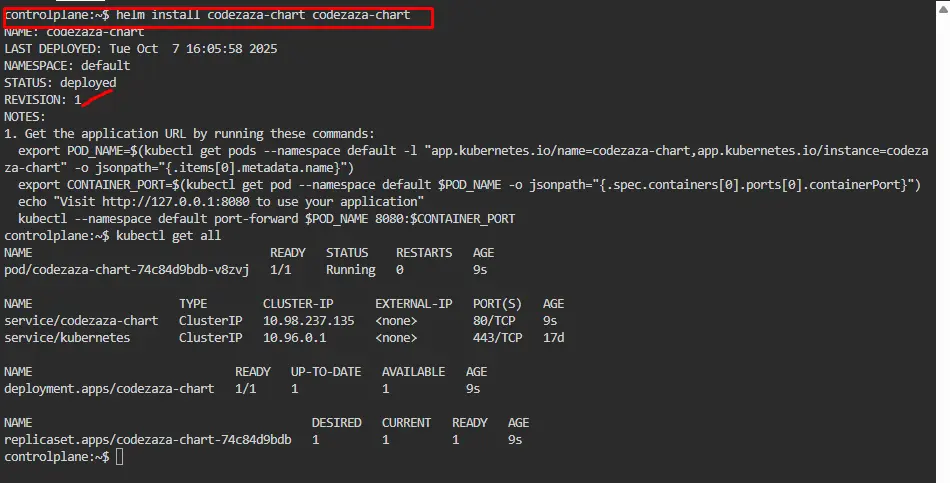
2. List All Helm Releases
To view all the applications deployed via Helm in the current namespace, you can use the helm list command:
helm listThis command shows essential information about each release, including the release name, namespace, revision number, status, and chart version. It’s useful for monitoring what Helm releases are currently running and tracking their deployment history. You can also filter releases by namespace using -n <namespace> for multi-namespace clusters.

3. Upgrade a Helm Release
When you need to update an application with new configuration changes or chart versions, the helm upgrade command comes into play:
helm upgrade <release-name> <chart-name>
This command updates the existing release with new templates, chart updates, or values. Helm handles the deployment intelligently, applying only the necessary changes while keeping the application running. Upgrades are tracked in the release history, allowing rollbacks to previous versions if something goes wrong.
4. Uninstall a Helm Release
If you want to remove an application completely from your cluster, you use the helm uninstall command:
helm uninstall <release-name>
This deletes all Kubernetes resources associated with the release, including Pods, Services, ConfigMaps, and more. Helm also removes the release from its internal tracking, ensuring that your cluster remains clean. Uninstalling is a safe way to remove applications without manually deleting each resource.
Difference between Helm and Kubernetes
The following are the difference between helm and kubernetes:
| Feature | Helm | Kubernetes |
|---|---|---|
| Purpose | It is package manager for Kubernetes applications | It is a Container orchestration platform |
| Main Components | Charts, Tiller are the main components of helm. | Pods, Services, Deployments, ReplicaSets |
| Deployment | It manages deployment of applications | It orchestrates containers across nodes |
| Abstraction | Uses Charts to abstract Kubernetes resources | Directly manages container orchestration |
| Customization | Supports values files and templates for configuration | Configuration through YAML manifests |
| Updates | Simplifies application upgrades through Charts and releases | Manages rolling updates and scaling |
| Usage | Ideal for packaging, distributing, and managing Kubernetes applications | Used for deploying, scaling, and managing containerized applications |
Difference between Helm and Docker
The following are the difference between helm and docker:
| Feature | Helm | Docker |
|---|---|---|
| Purpose | It is package manager for Kubernetes applications | It is platform for building, shipping, and running containers |
| Main Components | Charts, Tiller | Docker Engine, Dockerfile, Docker Compose |
| Abstraction Level | Abstracts Kubernetes resources with Charts | Virtualizes operating system-level containers |
| Usage | It manages the application deployment and lifecycle within Kubernetes clusters | it builds, runs, and distributes containerized applications across environments |
| Community | It maintained by Helm community and CNCF | It is developed and maintained by Docker, Inc. |
Why use Helm Charts in Kubernetes?
The following are the some of the reasons and insights on using of helm charts in kubernetes:
Standardized Packaging: It provides a standardized way of packaging the kubernetes applications with their dependencies.
Reusability and Modularity: Charts will encapsulates the kubernetes resources into as reusable components. Its modularity allows for easier sharing and deployment of applications, promoting the efficiency over the effort.
Community and Ecosystem: Helm has a strong community and centrailized repository of official and community maintained charts. Its ecosystem helps the users to discover, share and contribute the charts for common applications.
Customization and Flexibility: Charts supports the parameterization through the values and templates. It allows the users to customize the deployments based on the specific requirements.
Advantages and Disadvantages of Helm
The following are the advantages and disadvantages of Helm:
Advantages
Simplifies Deployment: The following command is used to streamline the deployment and management of kubernetes applications through packaged charts.
Version Control: The facilitates with providing the version control for application releases, making it easy to roll back to previous versions.
Reusable and Shareable Charts: It facilitates with promotes reusability and sharing of helm charts across different projects and teams.
Disadvantages
Learning Curve: It requires a learning curve for new uers to understand the helm concepts and YAML syntax.
Complexity with Customization: It can become complex when their are heavily customizing charts and requires careful management of values and templates.
Dependency Management: Management of dependencies can be challenging, especially with nested charts and version mismatches.
Best Practices of using Helm
The following are the best practices of using Helm:
1. Use Version Control: It is used for storing the helm charts in a version control systems like Git for tracking the changes and collaborations.
2. Implement Chart Testing: It is useful for tools like Helm Test and automated CI/CD pipelines for testing charts before deploying to production.
3. Follow Security Best Practices: It helps in audit and review of helm charts for security vulnerabilities and use secure credentials and access controls.
Conclusion
Kubernetes Helm is a powerful tool that simplifies the deployment, management, and scaling of applications on Kubernetes clusters. By packaging Kubernetes resources into reusable charts, Helm provides a standardized, flexible, and efficient approach to managing complex microservices architectures. Its features—such as versioning, dependency management, release tracking, and configuration customization—make deployments consistent, repeatable, and reliable across different environments.
While Helm offers significant advantages like streamlined deployments, reusable charts, and easy rollbacks, it also comes with challenges such as a learning curve, complexity in heavy customization, and dependency management. Following best practices like version control, chart testing, and security auditing ensures safer and more efficient use of Helm.
Overall, Helm bridges the gap between Kubernetes’ powerful orchestration capabilities and the practical needs of developers and DevOps teams, making it an essential tool for modern cloud-native application management.
